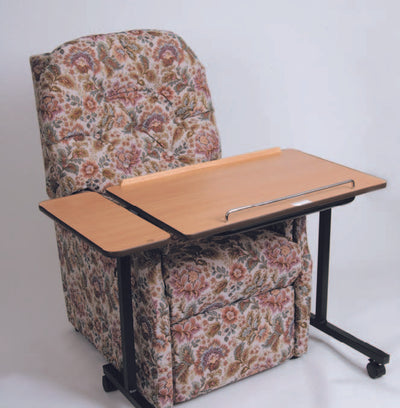When an elderly person or someone with declining mobility becomes bed-bound or has perhaps begun to struggle with getting in and out of bed and finding a comfortable sleeping position, it might be time to invest in a hospital bed for them to use at home.
When buying a medical bed for home use, it’s important to consider the features and benefits that you need, as well as the different medical bed accessories available. It’s also important to take the necessary safety precautions to ensure that the user is safe and secure. With the right hospital bed for home, you can make life easier for both the patient and their carers.
What Types of Hospital Beds are Available?
While there are many different types of hospital beds designed for use at home, they will all vary in terms of the specific features they have. The two most popular categories of hospital bed are:
Manual - a basic bed with manual adjustment features. Usually these will have a ratchet head and foot section on the mattress area as well as a foot pump style height adjustment. Manual hospital beds are the most affordable option and are ideal for an elderly person who still has a relative amount of mobility and independence.
Electric - the more expensive option, electric hospital beds have significantly more features and are generally easier to use. They allow the user (elderly person or carer) to adjust the mattress position and height of the bed using a button control and, because they are run on an electric motor, they require little mobility or strength to operate.
Features To Consider
Regardless of whether you go for a manual or electric hospital bed for the home, you’ll want to make sure that the bed has all of the features you’ll need to support the person who will be sleeping in and using it. You will also want to consider how the bed’s features affect the ability of any carers to do their support work with the user.
Height adjustment - does the bed have a feature to raise and lower the whole height of the mattress area? A full height adjustment feature will make it much easier for carers or the user to transfer from bed to chair and vice versa.
The option to lower the bed might allow the user to step in and out of bed independently. While, the option to raise the bed higher could offer better use of a hoist or bed transfer aid, or simply to allow for a view out of the window, for example, if someone is going to bed bound for some time.
Mattress positions - most beds will have a mattress area made up of 4 separate parts that can be raised, lowered and adjusted to provide the optimal lying position for the user. Consider whether the back can be raised while perhaps allowing the feet and ankles to also be raised for added comfort and circulation.
Bed Rails - for extra safety and security (such as preventing falls or offering extra stability during movement) it’s essential to look for a bed that allows for the addition of grab handles and bed rails along the side.
Type of Mattress - because the mattress base is mobile, you will need to use a flexible but supportive mattress that will work in any of the positions the bed can create . Elect for a flexible foam mattress that provides good comfort as well as pressure redistribution across the body.
For those who are largely bed bound (even if at least temporarily) you will want to consider how to prevent bed sores or bed ulcers with a pressure relieving mattress which used air pressure to gently move and keep blood flow circulating even in sedentary users.
When considering a transition to a hospital style bed for the home you might also consider accessories to improve the users comfort, such as a bed wedge for extra support sitting up, as well as a good supply of comfortable bed pads and protective bed sheets.
For more help contact us here at Mediworld. We have over 50 years of experience supplying medical and homecare items to support the elderly with living independently for longer.




































